Kou K. Nelson's Blog
November 26, 2012
The Economics of Boo-ty
 (Apologies for running two holidays behind)
(Apologies for running two holidays behind)The first time I ever fell asleep in class was during high school economics my senior year. I’d like to say I fell asleep because I was staying up late working or even going out with my friends (I won’t even try to say it was because of studying). It was also the first time I ever earned a D in a class. When my parents asked about the grade, my response was the same as most students’ whose grades were slipping, “The teacher is boring.”Of course, that earned me narrowed eyes and a big, “So what?”I loved school and learning. “Dull” was one thing – a teacher who lacked a dynamic personality - but that had never stopped me from learning before. Then I realized “boring” meant that I couldn’t relate my life to anything that the teacher was describing. I can still hear the teacher saying, “Guns and butter….” How (or why) would butter be made in a gun factory or vice-versa? And wouldn’t there be metal shards in the first batch of butter? That would be dangerous. How long did it take to clean the equipment to make it safe for making butter? Were the first batch of guns slippery? And then everything would fade to black and the unicorns and rainbows would appear and all was right once more.“How can you not understand economics?” my dad asked.I had run two “businesses” prior to my senior year – first the quail raising fiasco with my neighbor throughout middle school and in my sophomore year when I served as vice president of marketing for Junior Achievement (where we actually decided on a product, made it, and sold it, not just filling out a workbook, which is what happens today). I knew about cost effectiveness, the difference between gross and net, the importance of pleasing stockholders as well as keeping worker morale high (all members of JA were paid) among other concepts, although without the terminology.But there was a simpler way for the teacher to relate economics to all students: Halloween booty.While costumes were important, as every child knows, a significant part of Halloween is about candy, not just quantity, but also quality. It starts with market research. This is done the day before Halloween, an informal survey among fellow students. With a neighborhood school, everyone knew where their classmates lived and most of us were within walking distance. “What kind of Halloween are you guys giving out?” Chocolate earned high marks, taffy, low. Pixie sticks and Smarties were flexible depending on one’s taste. A sufficient number of chocolates warranted adding that street to the route. There was also some research done on the fly as one group left a house when another approached. “What are they giving out?” “BUTTERFINGERS!” Yes! Or (sigh) “Neccos.” Ugh. Pass.
Business Plan: Having a plan was key. How long would trick-or-treating last? What routes would maximize quantity and quality? What size of bag would allow for a good take, but not look too greedy not to mention be comfortable to carry with its weighted load. Plastic pumpkins cut up hands, and we wanted payment to be as painless as possible.Sales: For safety (and fun), no one went trick-or-treating alone. But the number in the group, along with the type of costume needed to be considered. A large disorganized group allowed for occasional double dipping, but could also result in team members being overlooked. If costumes were too threatening, the homeowner would want to be done with the transaction quicker. Small talk or gimmicks (singing or other performance) were worthwhile at places with high value candy. The trick-or-treating business did not end once we returned back home.
Gross Profit: Candy was counted and sorted. Any open candy was tossed, naturally. Then negotiations began.Supply and Demand: Fortunately, my sister and I had differing tastes in candy. She preferred tart and powdery whereas I preferred chocolate with something (Butterfingers, Krackles, $100,000 Bars) and caramel (Milk Duds, Sugar Daddies, and caramel squares). Some items were an equal exchange - Bit O’Honey for Pixi Stix. And then there were the disposables – Specials, Neccos, and 3 Musketeers. Depending on the trend, there might be more tart than chocolate, potentially giving my sister the advantage. Pricing: While tart wasn’t my favorite flavor, was I willing to sacrifice quantity for quality? Mid-value candy (butterscotch, Jolly Ranchers, plain milk chocolate and lollypops) gave a little more flexibility. Full size candy bars and Dip Sticks were gold. Taxes: As with the monetary world, a portion of the Halloween booty went to the governing forces. My dad didn’t have a sweet tooth, but my mother had some favorites. At the time, since neither my sister nor I liked dark chocolate, all the Specials would go to my mother. She could have the 3 Musketeers as well. However, sometimes those didn’t suffice and taxes were raised. My mother would ask for our Snickers. My sister didn’t mind, but I liked caramel, so it became an issue of negotiating Mr. Goodbars and Baby Ruths, again decreasing quantity, but increasing quality.Budgeting: My mother rarely bought candy and when she did, it was usually a box of See’s. My sister and I were allowed to keep our candy, eating as much or as little as we pleased whenever we liked (although, there was The Great Disaster when our dachshund found my stash and devoured all but a single Tootsie Roll that bore a piercing the diameter of his tooth). It was considered a high achievement to still have candy when Thanksgiving arrived, and it never tasted sweeter than when the other sibling had squandered their portion.
Disposable Goods: My sister and I got so good at “budgeting,” that some candy turned sticky and gooey before we could finish it. We learned which candies kept (bubble gum) and which went “bad”(hard candy) and organized our consumption to accommodate expiration dates.
I took economics again in college, dreading the moment. However, my professor used a variety of illustrations, including a Broadway musical song, to explain terms and concepts. I didn’t fall asleep and surprisingly, I had the highest grade in the class. Sweet.

Published on November 26, 2012 19:59
October 23, 2012
Baby, You Can Drive My Car

Despite being a native Angeleno, I’m not enthralled with
cars or driving. I wasn’t eager to get my driver’s license; I didn’t beg to get
a car; I rarely volunteer to drive the carpool, and I don’t know where the
drive-thru fast food places are. Because I like to observe, I much prefer
public transport, or, better yet, safety and comfy shoes permitting, walking. While driving, one is required to be vigilant
rather than observant, but I tend to slide from the former into the latter,
which isn’t safe and I realize that.
It doesn’t matter so much if I’m caught in traffic on the
405. Being vigilant, I notice the driver
to my right is shaving with an electric razor.
But then I observe how he shakes out the razor and start wondering if
his car is coated with a fine prickly silver dust of razor stubble and if so,
how thick is it? It’s kind of gross, but
how much grosser than, say, dog hair, which isn’t as prickly but probably
stinks a little and - -
HONK!
I dutifully pull up the half car length that appeared during
my observation/wonderings.
And then I become aware that the driver to my left is
reading a book, and of course I start wondering what kind of book he could be
reading. It must be pretty intriguing
since he can’t put it down long enough to drive where he’s going. At least I’m not reading, and I feel a
little better about myself, but he’s so interested
in the book that I’m a little jealous. Maybe
he’s reading an assignment, but he’s too old to be a student. No, that’s stereotyping. He could be a
- -
HONK!
I’m careful as I nudge my way forward because the driver in
front of me is applying make-up. She’s
curling her eyelashes and I have to wonder if she’s ever been startled and
accidentally pinched off her lashes.
Then she applies mascara and I obsess about rear ending her because just
a little bump could cause her to jab her eye and I think if I bumped her just a
tiny bit, that would teach her a lesson about how dangerous that is. But then I imagine her eye on a mascara wand
looking something like a Halloween Charm Pop and that freaks me out. What would she do and how would the other
drivers around her act, because for sure they’d notice a woman with an “eyeball
pop,” wouldn’t they?
HONK!
My family is aware of my tendencies. Safety and practicality were always top
priority.
The first car I drove was the family’s silver station wagon,
a 1968 Chevy Impala.
“It’s heavy and safe,” my mother declared.
It was a behemoth of steel.
Once, while my sister and I slept soundly in the far back, we awoke to a
thump and the sound of breaking glass.
We’d been rear-ended. My father cursed, stomped on the parking brake,
and went out to inspect the damage. It
was raining and my sister and I, hands and noses flattened against the back
window, strained to see into the watery night. The other car had broken
headlights and a drooping front bumper.
My dad grumbled something, got back in the car and we drove off. The next morning, I hurried out to see the
damage to our car, hoping it would enhance the tale of Our Car Crash. But the effect was lost when I saw that the
only damage sustained was the tiny bent step, a palm-sized, rubber topped
protrusion. My sister made the first and
only dent in the car 11 years later, when she took out the cement block wall in
the high school senior parking lot.
My next car was also “safe and reliable,” a Honda Accord
that my parents purchased from a family friend the year before I graduated
college. The only thrill about it was that it was a stick shift. My sister eagerly taught me how to drive it. Oddly, it was my future husband who had
taught her how to drive stick. I brought the car with me to Baton Rouge,
where it was totaled on a rainy day when, ironically, I was rear ended. However, I
had run into the car in front of me first while sharing my observations with my
passengers (who weren’t harmed).
My mother made me promise to buy something “safe and
reliable.” I did. I drove that car to
Washington, D.C. and then over the Chesapeake Bridge. My vigilance slipped into the observation and
I realized that at some point, between the “bridge” becoming a tunnel, there
was water level. I panicked. What would happen if a big ship came by,
creating a giant wake? Wouldn’t the
tunnels flood? I pulled over in one of
the observation areas, and my then boyfriend took over driving duties while I
scanned the bay for giant ships and rolled down the windows, planning to get
out of the car before the water in the tunnels peaked.
It wasn’t until I got tenure as a high school teacher, that I
decided I would finally get a car that I wanted, one that I might actually
enjoy driving. I saw a convertible 1997
Toyota Celica. My husband slid in next to me and his head scrubbed the
ceiling. I pictured his bald spot
getting larger with the chafing.
“If you like it, honey, get it. It’s your
car,” my husband said.
But I was already picturing him driving it.
There was a Mitsubishi Eclipse parked next to the
Celica. We tried that. My husband’s head cleared.
“Why would you go do something stupid like buy a
convertible? The roofs tear and leak in
the rain,” my dad snorted.
“Because it’s fun,” I said, at least as “fun” as a mode of
transportation could be.
I like the car because it gives me some variety (top up or
down?), and it’s pretty. I thought that
having a smaller car would make me more vigilant, but it doesn’t. My husband was afraid to drive it since we
wouldn’t be able to afford the insurance if he got a speeding ticket. The car doesn’t have many miles on it,
considering its age.
When the Eclipse started rattling, my husband said it was
time for something new. I’ve kept the
car for 12 years partially because it meant no car payments, but also because I
didn’t see what difference a newer car would make. But he was right. We needed something that would allow us to
transport the dogs. I’ve never liked
SUVs, so that left “cross-overs” or station wagons. I checked out the Prius V. It wasn’t stylish but it was reliable and
safe. But the gadgetry concerned
me. Would my exterior observations be
drawn into the interior? Then I saw the
gas mileage: 42 miles to the gallon
compared to 24. Sold.
It’s just dawned on me.
I’m back to a silver station wagon.
“Let’s take your car, honey,” my husband said as we prepared
for a weekend trip.
“Sure, but you drive,” I said.

Published on October 23, 2012 15:24
October 11, 2012
Turnabout is Fair Play
Read about Kristina Wojtaszek's inspiration for "Cinder" here.

Published on October 11, 2012 09:09
October 10, 2012
September 24, 2012
It's Heeeeeere!
 Specter Spectacular: 13 Ghostly Tales has arrived in the virtual world! Kindle users click here. Paperback version gets released tomorrow for all you bibliophiliacs!
Specter Spectacular: 13 Ghostly Tales has arrived in the virtual world! Kindle users click here. Paperback version gets released tomorrow for all you bibliophiliacs! Find out if it is "Safe Upon the Shore!"

Published on September 24, 2012 17:46
September 4, 2012
Body of Evidence
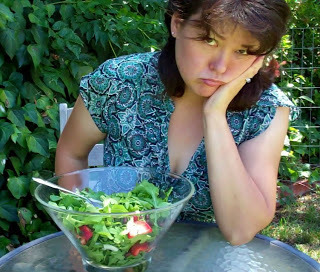 “You’re a happy eater and a sad eater. That’s not good.” - A friend
“You’re a happy eater and a sad eater. That’s not good.” - A friendLet me clarify, my friend wasn’t speaking to me, but she could’ve been and in my case she could’ve added “stress-eater,” “celebratory eater,” and gourmande. Food and I have a love-hate thing. No, it’s more like food “just isn’t that into me.” Although, it is way into me, especially around my belly - a good couple of few inches thick at that. And so, it’s on to The Salad Days.
I hate salad.
O.k., not really. Plenty of people have witnessed me ordering a salad and eating it with a fair amount of pleasure. There are even some salads that I crave (gasp!) – the salad niçoise at the now gone Left Bank for example or the seafood cobb salad at Marmalade Café (sans bacon). So, it’s not salad itself that I hate, but what the Salad Days represent: penance, order, rationality.
The irony isn’t lost on me. Perhaps it’s another sign of our times that the very phrase that has historically meant a time of abundance and wild abandonment has come to mean a period of asceticism and temperance. How is it that fresh and nutritionally rich food is considered a penance? How is it that I scoff at this permitted unlimited indulgence, which rewards me with better health and appearance?
The penance isn’t so much because I’ve gained weight, although that is a problem since even my “fat clothes” are getting a bit snug. If I’d over-indulged in martinis and raw oysters, white chocolate macadamia nut cheesecake, Irish mussels, or lobster boils, that would be fine. I love those foods. But I can’t remember what I’ve been scarfing down for the past few months, and that for me is the bigger problem.
I’m not a control freak, because if I were, I wouldn’t be in this situation. And I’m not completely out of control, because if I were my situation wouldn’t matter. My problem is that I want to be a control freak but it, or rather I, go pear shaped and now I’m trying to run damage control. Welcome to the mind of a bulimic.
Bulimia isn’t just gorging and purging. Bulimics don’t eat everything anywhere, that would be pica and in the eating disorder hierarchy, people with pica are the bottom rung. For the record, anorexics are the top wrung, ethereal creatures that have complete control over the basics of life. They’ve got attitudes. They mock those of us on the lower rungs. They keep to their delusions. They don’t waiver between the two worlds.
Bulimics blur the line of rationality. They think each step of the process through, but not all at once. They know the laws of association – that eating certain foods recreates emotional memories. Like the first puff of a cigarette, the first bite triggers emotional memory, but then it disappears and that pleasure of the first bite is followed by a neutral second, third, fourth, five thousandth bite. Then it’s time to chase the emotional fulfillment with the next food that has a similar association. And then the next.
The problem arises when, unlike alcoholic drunkenness, “sobriety” returns instantaneously. It’s like having the cheesecake goggles ripped off my face, knowing that “magic food” is not the solution to the problem. Then damage control kicks in: the purge. There’s actually two kinds of purges: the kind to alleviate gastric pressure – which happens while still on a glassy-eyed bender and then the second, which is a pathetic attempt to undo what’s been done – not the consumption of calories so much as an attempt to turn the clock back to rationality. It’s part of denial. We don’t want anyone to know that we’re subject to bouts of irrational thinking and we’ll go to great lengths to hide it.
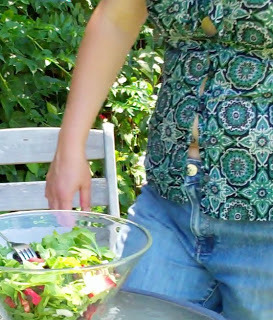 Claims of “chapped hands” explain teeth chaffed knuckles, excessive love of citrus explains acid erosion of gums and teeth. Mouthwash and perfume hide the scent of vomit, but when barf spatters force a change clothes or worse, the need to wash one’s hair, there is panic. Showering after a meal and changing clothes raises questions. People will know about those Lost Hours. “Pure” bulimics (as opposed to anorexic-bulimics) tend to be overweight. The shame of the weight is not so much body image as the fashion magazines and feminists would like us to believe. Excess weight is seen as the record of how many moments of irrationality we’ve experienced over a period of time.
Claims of “chapped hands” explain teeth chaffed knuckles, excessive love of citrus explains acid erosion of gums and teeth. Mouthwash and perfume hide the scent of vomit, but when barf spatters force a change clothes or worse, the need to wash one’s hair, there is panic. Showering after a meal and changing clothes raises questions. People will know about those Lost Hours. “Pure” bulimics (as opposed to anorexic-bulimics) tend to be overweight. The shame of the weight is not so much body image as the fashion magazines and feminists would like us to believe. Excess weight is seen as the record of how many moments of irrationality we’ve experienced over a period of time.Several years ago, I thought I’d take the bulimia by the horns. I realized that no matter how much salad I ate, I could lose weight. I looked great. I had more energy. I started doing things I enjoyed again like writing, dancing, and going to concerts. With such good memories, I was hoping that salad would become my “go to” comfort food.
It’s not. Long running habits are difficult to break, especially when my comfort foods factor so strongly in society’s moments of celebration and conviviality. This only reinforces their emotional connection for me.
I don’t purge anymore. The damage it poses to my health are worse than the shame of irrational food consumption. Besides, I have many irrational behaviors, so what difference does one more make?
The Salad Days are here. It’s time to embrace them.

Published on September 04, 2012 17:42
August 11, 2012
Bubble, Bubble, Toil and Trouble
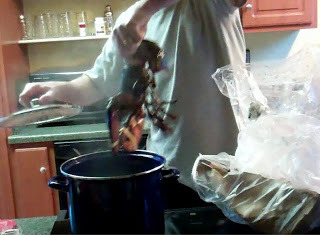 Murder most foul... or crustacean, in this caseIt’s been a difficult few months. My husband suffered the brunt of what has happened. I’ve only been support. So, when my birthday arrived, my husband gave me a look of exhaustion and futility.
Murder most foul... or crustacean, in this caseIt’s been a difficult few months. My husband suffered the brunt of what has happened. I’ve only been support. So, when my birthday arrived, my husband gave me a look of exhaustion and futility.“No worries,” I assured him.
Even so, having a birthday is a perfect excuse for a celebration, an invitation to luxuriate in happiness with those around us. And we needed to celebrate, not for me, but to remind ourselves that life goes on.
“Hey, I have a crazy idea,” I said, calling him from the downtown parking lot.
“Uh-huh,” he replied warily, knowing few of my ideas aren’t crazy.
“What if we have lobster for dinner?”
“Lobster?” There’s a hint of despair in his voice and I suspect he’s checking his wallet.
“Not going out,” I assure him. “What if we cook it? The live ones at the Asian market weren’t that expensive ….”
There’s a long pause from both of us. It’s understood.
“O.k.,” he says, tacitly agreeing to the unspeakable.
I go to the market. The tank is over-crowded, stress inducing, intolerable. I finger which lobsters will be “freed.” I carry them to the car and debate whether I should put them in the trunk or the cabin with me. I opt for the cabin since it has air conditioning but as I drive home, I imagine them tearing their way out, charging me, claws snapping as I swerve into oncoming traffic.
“Where are they?” my husband asks, lowering his voice and looking around the kitchen after I arrive.
“In the fridge,” I say.
We exchange looks.
If it were done when t’is done, then ‘twere well it were done quickly.
I hurry to my computer to look up how to cook lobster. I know they should be boiled or steamed. But, what I’m really looking for isn’t cooking time, but dying time. When I was a child, my mother bought live crabs from the wharf, thinking it would be cheaper to cook them at home. I remember the horror of hearing the crabs hit the top of the pot, the lid popping off as they tried to climb out, my mother panicking as my dad cursed and grabbed the crabs, throwing them back into the pot and holding the lid down as they shrieked. He assured me it was just steam escaping their shells.
The Lobster Institute must encounter many people similar to me, although their responses are a bit elusive. When asked “Do lobsters feel pain?” they equate their neurological system to that of insects. A crafty move. I don’t consider pain when I squash invading spiders or fleas. But when asked specifically about the “movement of lobsters in a boiling pot,” they say that it is “a reflex action to any sudden stimulus.” A reflex which continues for over a minute? While a lobster can’t “process pain,” it can feel it and its reflex action is to get the #$%^ out of the situation.
Boiling appears to be the “fastest” death, although what is done before putting the lobsters into the pot makes all the difference. “Hypnosis” actually doubles the time it takes for the lobster to die. Slow heating in salt water also increases the amount of “activity.” However, chilling the lobsters (putting them on ice or in the freezer) not only delays the reaction to pain, but by the time they feel it, they’re almost dead.
I inform my husband. He rushes to the freezer and makes space. We put the lobster into it. I make martinis.
I prepare the water and set it to boil. I make a salad; chop up potatoes and corn to add to the pot. My husband paces, glancing at the pot through the glass lid.
“Is it time?” he asks.
The water is at a rolling boil.
“Yes.”
He opens the freezer and rips open the bags.
“Wait,” I say, “let me get the camera.”
He’s appalled.
 Out, out, damned spot. Darn, I think it's butter.I film him putting in the first lobster and stop filming so that I can put mine in, but before I can do it, he puts the other one in and shuts the lid. He glances at me, then stares at back at the pot, holding his breath.
Out, out, damned spot. Darn, I think it's butter.I film him putting in the first lobster and stop filming so that I can put mine in, but before I can do it, he puts the other one in and shuts the lid. He glances at me, then stares at back at the pot, holding his breath.There’s not a sound.
He heaves a sigh of relief.
“I have done the deed.”
All hail, Thane of Concord.

Published on August 11, 2012 21:30
June 21, 2012
Power Tools

Weekend warriors grab your palm sander!
I get a thrill out of using power tools. It seems cliché, but it’s only been in the
last ten years or so that women have really embraced getting involved with the
more “heavy” home improvement projects and my age group was at the tip of this
wave. It’s not the tool so much as the
power it implies.
With women regularly seen in the military, sports, as
anchorwomen, doctors and lawyers, we forget that this has all happened in recent
history, within two generations. Although
the Women’s Liberation movement was in the 60s, my mother and the mothers of my
friends rarely had a career before they got married and less so
afterwards. Despite this, our mothers
were the first generation to experience divorce with increasing
regularity. If they themselves weren’t
suddenly single, they certainly knew people who were.
While divorcees were pushed into low paying jobs and working
long hours, our mothers sought to arm us with education, skills and the confidence
to stand on our own, carve our place in the world and survive, or better yet,
thrive without needing a man. The thing
is, they weren’t entirely sure how to do it.
I remember a light in one of the ceiling fixtures blowing
out and my mom sucking her teeth and saying, “Daddy will have to fix that when
he comes home.”
I’m not sure if my father had to do it because changing a
light bulb was considered a man’s job, because of my mom’s diminutive height
(she is only five feet even), or because of the inconvenience of having to go
into the garage to lug the ladder into the house. Still, it angered me that we’d have to wait
helpless in dimness for someone to do something that couldn’t possibly be more
difficult than changing a light bulb in a lamp.
So, I did it.
Not a huge feat, but I felt a small sense of victory while
ignoring my mom’s cries to not electrocute myself.
Another time my mother returned from coffee with another
mother. My mother’s eyes were bright, “Mrs.
S showed me her garage. There were all
kinds of big saws and tools. I told her,
‘You’re lucky to have such a handy husband.’
Do you know what she said to me?”
My sister and I shook our heads.
“She said, ‘Those are my
tools.’” A smile of admiration and
wonder spread across my mother’s face.
She told us how Mrs. S built a doll house to Barbie scale and furnished, painted, and tiled it as
well. And then she worked on her own
house.
My mother was in awe.
Entry into the “boy’s world” was seen as the key to
independence and security. Almost all
the girls joined a soccer team. We didn’t
all stay, but we got a taste of a contact sport. Unfortunately for me, most of the contact was
with the ball to my face. “Tom Boy,” a
formerly derogatory term for lesbians, suddenly became a badge of honor. Girls started
playing all variety of sports, excelling in math and science, and swearing like
sailors. They took auto and wood shop
classes.
One of my closest friends is the boy I grew up with from
across the street. Together we learned
how to build a tree house, a go cart, and an aviary. I learned the names and how to use a variety
of tools, and because my friend’s father was an engineer, he was able to
explain the whys and wherefores of how things worked and ought to be built.
And then one day, my mom saw me using a jig saw.
There was a mix of pride and horror in her face. “Stop that!
You’ll cut off a finger!”
“I’ll have nine more,” I argued in snarky adolescence.
“You can’t be a pianist and brain surgeon with only nine
fingers,” my mother retorted.
To which my friend, despite his best efforts at suppression,
snickered and started to laugh uncontrollably.
I know the laughter was meant for my mother’s ridiculous
fantasy of my future, but in it I also heard the soft click of a door closing between
the male and female world.
I think that independence frightened some of our
mothers. To quote Rocky Horror, “we tasted
blood and wanted more, more, more.” While
they wanted us to have prosperous careers as doctors, lawyers, or computer
programmers, they didn’t expect us to question other female stereotypes.
The past had Nora Helmer, Marlo Thomas, Mary Tyler Moore,
and Golda Meier. The 80s kicked ass. We
were Madonna and Annie Lennox, Ellen Rip1ey and Sarah Connor, women who had
guns and “guns.” Connie Chung and Tricia Toyota became anchor women. Bitch was a compliment and never paired with “my.”
We weren’t afraid to live on our own or travel alone to
foreign lands. We moved to different
cities, states, or even countries not to follow someone, but because we wanted
to explore something different.
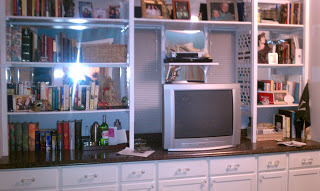
The finished project.
While starting my own business, I felt frazzled and insecure. I figured part of it was due to the disarray
of my “office.” I decided to put in
built in bookshelves and cabinets to help organize the chaos.
“We can’t afford to hire anyone,” my husband reminded me.
“I’ll do it,” I said.
I am woman. Hear me
drill.

Published on June 21, 2012 18:47
June 14, 2012
Good-bye, Kitty
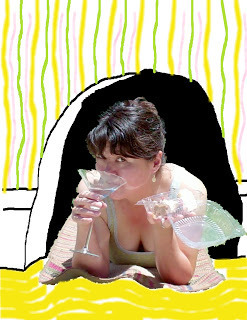 The cat's away. What shall we play?Let me first make clear that I love my husband. He’s witty, intelligent, and easy on the eyes. He helps with housework, tolerates and, at times even encourages, my idiosyncrasies, and loves the dogs. He is excellent company and a wonderful companion.
The cat's away. What shall we play?Let me first make clear that I love my husband. He’s witty, intelligent, and easy on the eyes. He helps with housework, tolerates and, at times even encourages, my idiosyncrasies, and loves the dogs. He is excellent company and a wonderful companion.Still ….
When familial or work duty calls for him to be out of town, I feel a slight thrill. While the cat’s away, the mouse shall play. The house will be mine. All mine. Mwahaha.
Like an adolescent who discovers her parents are leaving her behind on a long weekend, I start crafting devious ideas. Grand Plans. It’s not like I’m planning a raid on the liquor cabinet or advertising “Party at My Place!” on Facebook … although I suppose in a middle-aged way, I am. I have visions of inviting my girlfriends over for a slumber party where we revel in martinis, cheesecake, and period piece movies with men in boots and breeches and the next morning we’ll go out for brunch or stuff our faces with Entemann’s cheese-filled coffee cake. Woohoo.
Yes, I dream big.
But that’s not quite how it pans out.
First off, it’s just too much work. I’d have to clean the house twice (once before the guests and again afterwards). And where would everyone sleep? My friends are beyond the sleeping bag on the floor days, not to mention the almost impossible to remove film of dog hair and questionable stains on the living room carpet. There is the couch and the bed, but is it appropriate to ask friends to double up? Then there’s the matter of which t.v. to use. My office is too small with very little seating and my husband’s office, with its full-sized couch, has the t.v. awkwardly placed for group viewing. I suppose we could all gather on the bed upstairs, although that’s a little too Valley of the Dolls for me.
So, party of one it is.
I plan a menu of all the foods I love but my husband dislikes: smoked salmon, dressed up ramen noodles, arugula. I intend to get a slice of cheesecake for dessert, but I usually wind up with white cake. I’m not sure why. Maybe it’s the frosting, although I’m not particularly fond of frosting. It’s probably the vibrant colors. Sometimes, I’ll get Mango Lemonade to mix with vodka for pre-dinner cocktails but I usually forget about it until long after dinner, and by then it’s too late for an aperitif.
I can’t remember how to get the dvd player to work on my husband’s office, and the one time that I did, I couldn’t remember the code to get into the Amazon Prime streaming account. That leaves watching one of the boots and breeches dvds that I own or checking out the free movies On Demand.
Sadly, even those plans fall through.
I usually wind up on my computer, writing and taking occasional jaunts onto YouTube to find obscure 80s music videos, to which I dance and sing loudly, which scares one dog but encourages the other to join in the fun. If I’m lucky, I’ll find a movie that’s been broken up into ten fifteen minute sections, which is becoming a rarity since YouTube has been cracking down on copyright violations.
I usually clean the house, playing swing music or musicals on the stereo, which is silly since I can’t hear it over the whine of the vacuum cleaner or when I leave the living room. But it’s being able to do so that counts. I’ll do “major laundry” which means I’ll throw the slip covers into the wash.
Truth be told, I don’t do anything that differently from when my husband is home. But there’s a definite luxury in not having to ask what someone else wants to have for dinner, working on my own schedule, and not bothering to tone down my more annoying habits. I leave the bathroom door open when I’m using it, which is important since the dogs feel compelled to check-in on me, something they don’t do when my husband is home. Maybe that’s how they interpret my husband’s request that they “take care of the mommy.” If so, I have very responsible dogs who take their job seriously.
Of course, there are times when I leave town and my husband will be left alone.
“What are you going to do while I’m away?” I’ll ask.
He frowns and shrugs. “Enjoy a little peace and quiet,” he says with a wry smile.
“Don’t you want to hang out with your friends?”
“Sounds good,” he admits. “Maybe I’ll catch a disaster film on t.v. … Nah, I’ll probably just sleep.”
I’m pretty sure he will.
Such are the plans of mice and men.

Published on June 14, 2012 14:57
May 28, 2012
A Person of Color

Making the rainbow connection.
Just say it. It’s only two words.
“Swiss Coffee,” I say, trying not to sound morose or
resigned.
Swiss Coffee sounds like the canned sugary instant beverage
that came out in the eighties, but it’s not.
It’s a paint color. A bland,
commercial paint color only mildly less dull than Navajo White, which is like
saying it’s Hellman’s rather than Best Food’s mayonnaise.
Our tenants moved out of our house and, after seven years,
it needs a bit of freshening up before the next tenants can move into it. The thing is, because the previous tenants
were family and it was a quick switch as we moved up North, the colors were the
ones I’d originally selected when we first moved into the house.
I use “colors” loosely, but I don’t really know another term
to express the situation.
Let’s start from the beginning:
I blame my mother. That’s
how it always starts, isn’t it? Despite
my mother’s dreams of me becoming a concert pianist/brain surgeon, she
encouraged creativity. During rainy days
or moments of “boredom,” my mother would challenge my sister’s and my artistic
visions. She’d put on music and ask us
to draw what it made us feel like. She’d
cut open brown bags and have us draw on them, sometimes together, sometimes on
our own. She gave us round pieces of
paper or other odd shapes so that we’d learn how to organize space.
So, when I grumbled about the dullness of my room, my mother
suggested that I paint a mural on the wall.
I was giddy with the idea. I
sketched out horses in a pasture with a hill and trees. I painted them with acrylic paints. I was pleased.
"Why did you make them so small?” my mother asked.
The painting was more like a frieze than a mural. Still, I
liked what I’d painted and didn’t want to cover it to re-do it, although I
liked the idea of doing something life-size.
When my dad cleaned out the garage, I painted a saloon scene that took
up the entire wall. It was primarily
figures and the bar. It still didn’t
fill the space.
I repainted my bedroom, this time blue, a royal blue so
bright that it radiated into the hallway and my mother asked me to keep my door
shut to contain it. I liked the
glow. It reminded me of television
light. When I left for college, my
mother put up wallpaper on one wall.
She’s a huge fan of wallpaper.
But when she painted the other walls, she painted them a soft green,
rather than white, a huge difference for her.
I like to think I inspired her.
Several years later, I moved into half a duplex with my then
boyfriend. There was peeling grass
weave wallpaper on the bathroom walls. My
rabbit chewed on the frayed edges. I
removed the wallpaper and decided to try a faux finish, which was just starting
to become trendy. I did a golden yellow
for a fresco look. And, as with every
fresco, there should be angels, so I painted them as well. When I gave notice, the landlord made a
remark about the angels. I informed him
that I’d painted over them in a pale blue, but he kept my deposit anyway.
My husband started out as a “white walls” guy, but the
townhouse he bought had every wall covered with blue, orange, and/or peach
eighties wallpaper. The highlight was the
second master bedroom with a paper of blue,
green, and orange paint spatters. I
removed the paper, but because of the damage done to the walls, a French wash
was a necessity. I did a combination of moss
greens. He liked it. Then I painted the tiny washroom downstairs a
deep jade green. Once the mirror and
artwork were in place, he liked that as well.
Then I painted vines in the kitchen, “hiding” mice and bugs among the
leaves. The living/dining area became
honey brown, which naturally requires a swarm of gold bees.
When we decided to sell, I’d watched enough HGTV to know I
had to “vanilla” everything. We hired a
painter who made everything Swiss Coffee.
It didn’t bother me at that time, probably because I was ready to move
on to another house, one with a yard for the Uber Hund.
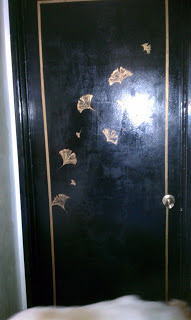
Black lacquer and gold ginko leaves
have no place in a vanilla world.
The house we bought, the one that later housed the tenants,
was a 50s modern and we both fell in love with it. I saw an Asian theme. I painted the trim
black in imitation of shoji screens. The
living area I painted to resemble, ironically, grass weave wall paper. The bedroom looked like gold leaf, the
bathroom glowed with a metallic mix, and the kitchen got black and white
stripes with red washed cabinets. It
became a Tony Duquette japonais fantasy.
And then we moved again.
While I wanted to move to the Bay Area, I couldn’t bear to
part with the Southern California house.
I loved the openness of the house, how it overlooked the Japanese garden
I’d created, the quirkiness of my paintings.
It had become extremely personalized.
Perhaps that’s why I’m reticent about making this house
“vanilla.” I’m still attached to it. It’s
still “ours.” My sister suggested a compromise,
“Decorator’s White,” the current “hot” neutral in the design world. While it was neutral and “white,” it was too
austere. I needed something warm, familiar, comforting and sweet. Something that anyone could enjoy.
I needed Swiss Coffee.
So, maybe it isn’t so different from the instant beverage.

Published on May 28, 2012 17:37




